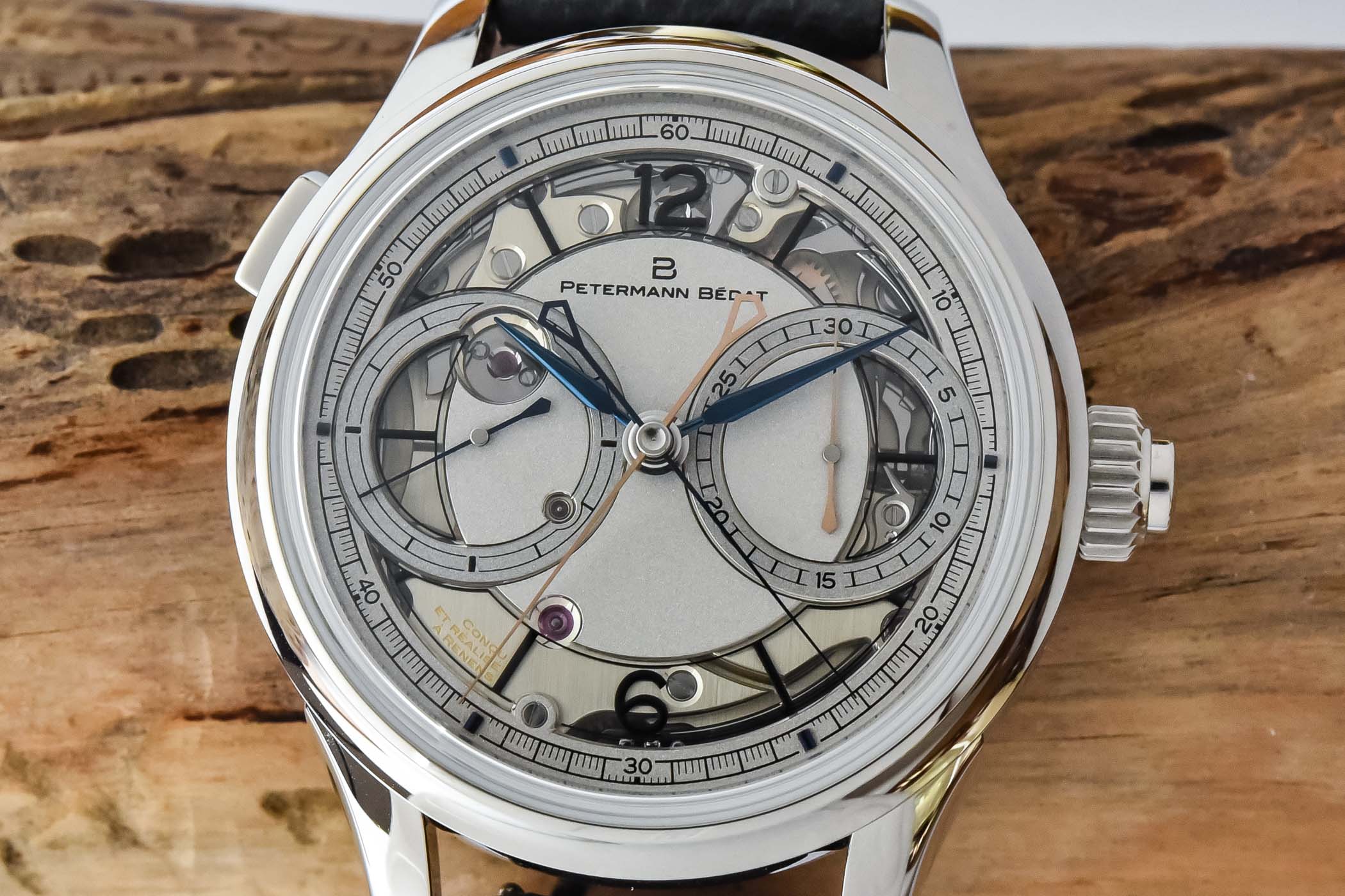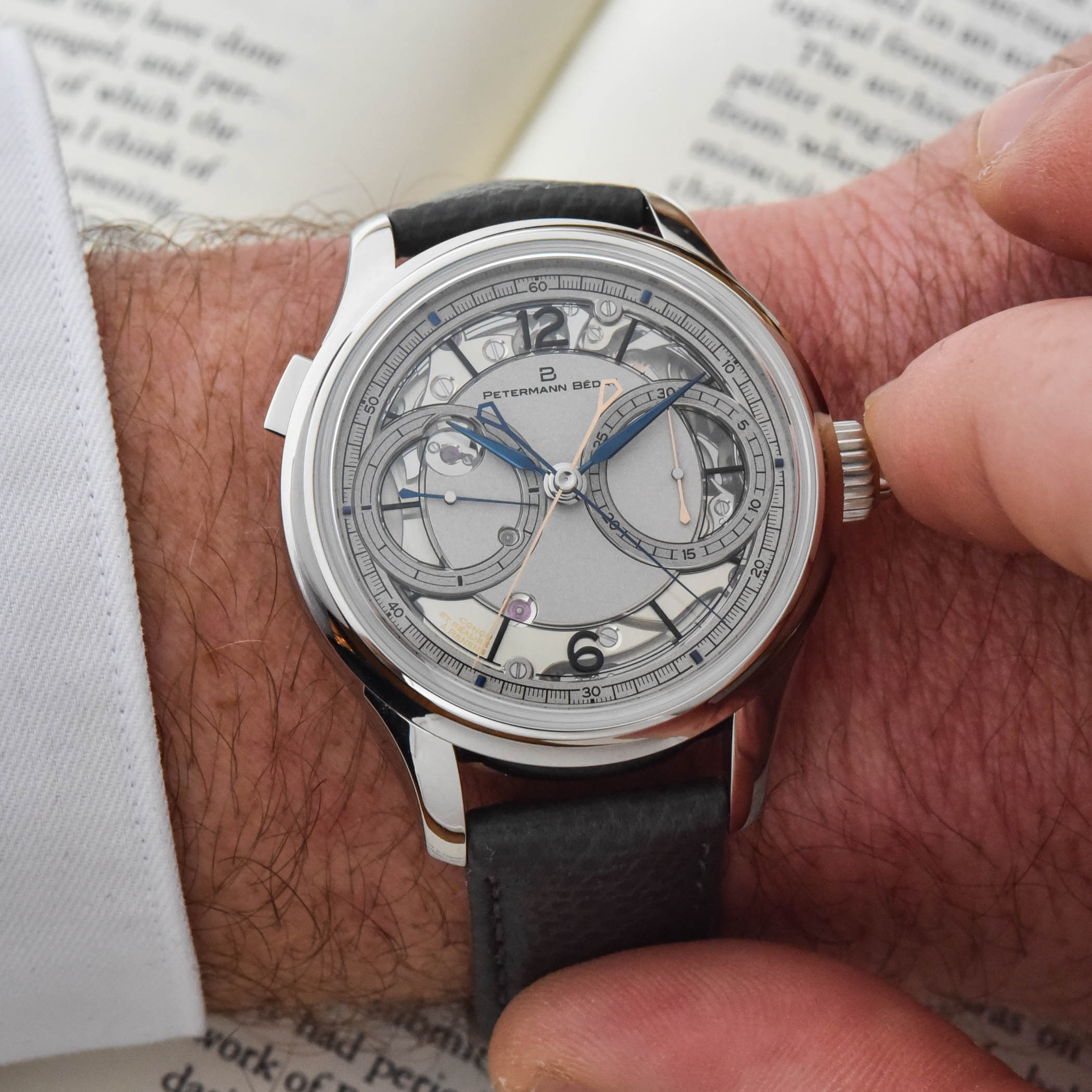Gaël Petermann and Florian Bédat created their independent watchmaking brand in 2017. In 2020, the dynamic duo of talented young watchmakers received a well-deserved industry accolade, taking home the Horological Revelation Prize at the prestigious GPHG for their superbly crafted 1967 Deadbeat Seconds. Petermann Bédat now moves one step further into complexity and high-end watchmaking with a magnificent monopusher split-seconds chronograph with a jumping minute counter. Meet the Petermann Bédat Reference 2941.
If the 1967 Deadbeat Seconds was already fairly complex, Gaël Petermann and Florian Bédat have not chosen an easy road for their second movement. The rattrapante (or split-seconds) chronograph is widely considered to be one of the most elaborate and difficult to produce complications in mechanical watchmaking. Rattrapante chronographs feature two superimposed seconds hands that time two events of different lengths simultaneously. One hand (the rattrapante) can be stopped to read an intermediate time, while the other one (the trotteuse) keeps running. A second push on the rattrapante pusher allows the stopped hand to catch up with the moving hand.

To create this new movement, Petermann Bédat has opted for a monopusher split-seconds chronograph with a column wheel and horizontal clutch. The jumping minute counter makes for a more precise interval read-off. The movement incorporates a safety mechanism, securing the reset when the rattrapante hand is stopped.

Visible via the watch exhibition caseback of the watch, the hand-wound calibre 202 is beautiful to behold. The 339-part mechanism is built on a unique, elaborate aesthetic. If it clearly pays homage to the great watchmaking tradition, it also feels modern and distinctive. The architecture and the steelwork (in particular with the impeccably polished levers with their arrow-shaped tails) are impressive. And as you’ve come to expect from Petermann Bédat, the decoration is impeccable, showing exceptional craftsmanship in every respect. Last, in an unusual manner, the split-second chronograph mechanism is positioned dial-side so you will not notice its characteristic parts through the back of the watch.
The calibre 202 beats at 18,000 vibrations/hour, a rather charming frequency knowing that 28,800 vibrations/hour is often the norm in modern watchmaking. The large balance wheel features a hairspring with a Breguet curve and is fitted with a swan-neck regulator. The autonomy is of 42 hours.


The reference 2941 comes in an elegant 38.6mm round platinum case with individually soldered stepped lugs and a box sapphire crystal slightly protruding from the concave bezel. The rectangular rattrapante pusher is positioned at 10 o’clock. In line with their first creation, the dial is a semi-open design made of platinum and sapphire and further reveals the movement, in particular, the dial-side split-seconds mechanism. It features two large registers and a minute track on its periphery.

The Petermann Bédat Reference 2941 Split-Second Chronograph is worn on a calfskin leather strap. A limited edition of 10 pieces, it retails for CHF 243,000, which is about the price of a Patek Philippe 5370P Split-Seconds Chronograph. Naturally, it won’t be for every pocket, but Gaël Petermann and Florian Bédat have created something very special here.
For more information, please visit www.petermann-bedat.ch.
https://monochrome-watches.com/hands-on-petermann-bedat-reference-2941-split-seconds-chronograph-specs-price/



